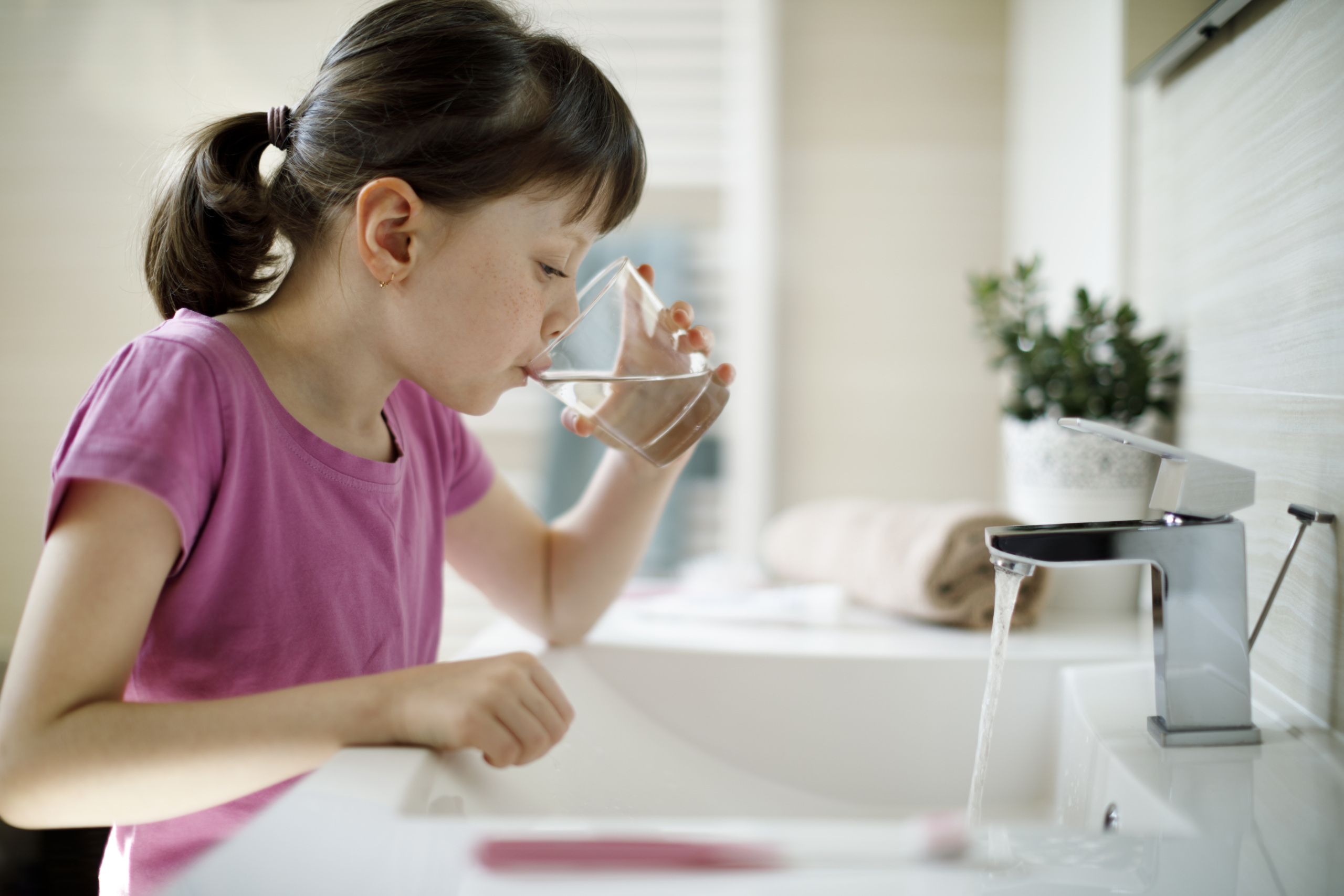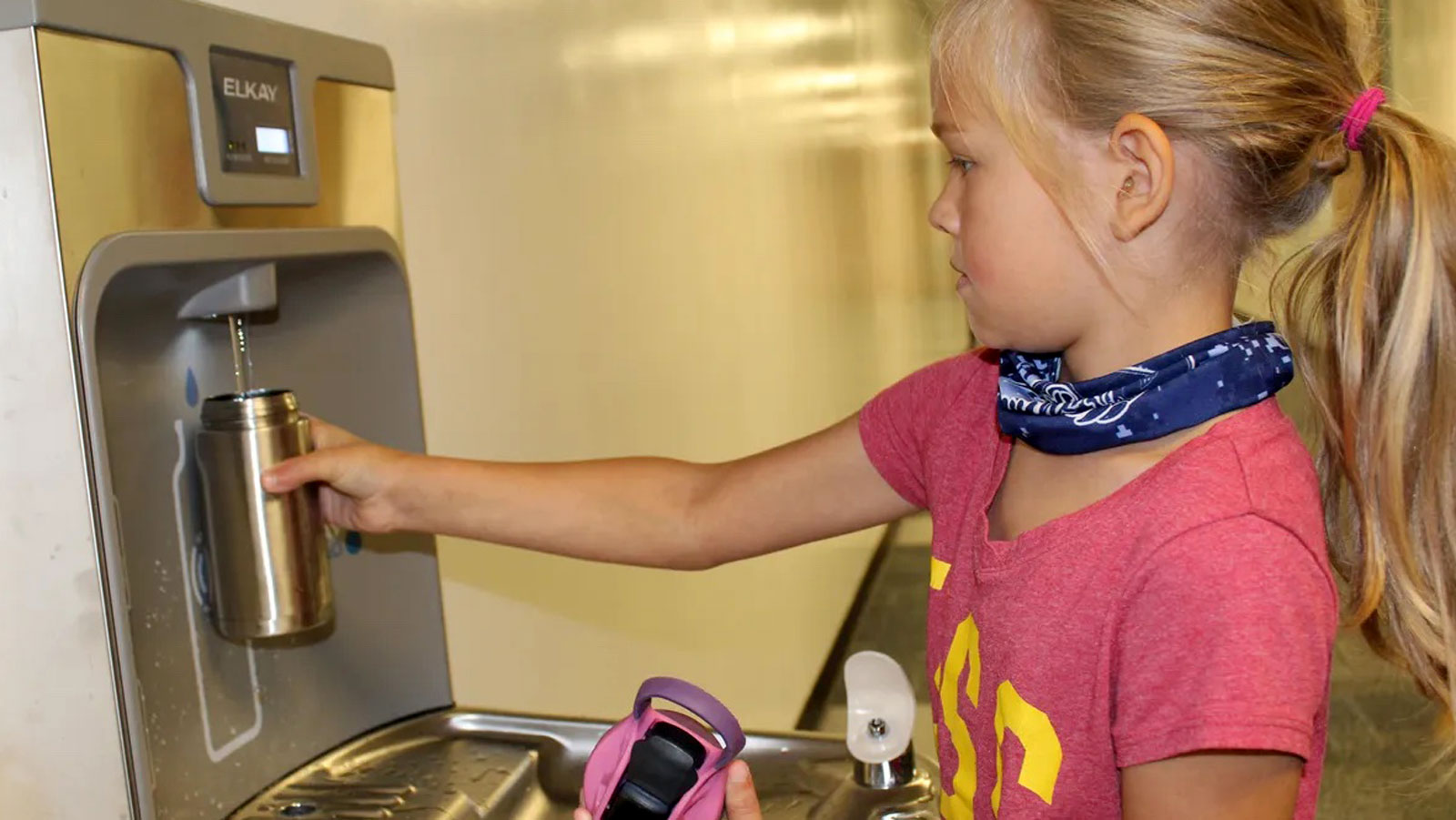
Testimony: The Lead Reduction and Remediation Act
Maryland PIRG supports HB1253/SB481 to lower the action level of lead in school drinking water and help schools remediate for lead.
Maryland PIRG supports HB1253/SB481 to lower the action level of lead in school drinking water and help schools remediate for lead. Below is our 2019 testimony.
Maryland PIRG, Clean Water Action, and Maryland Public Health Association support HB1253/SB481.
We would like to thank Delegate Solomon for introducing this bill and request a favorable report. Our children need safe drinking water – especially at school where they go to learn and play each day. Unfortunately, lead is contaminating drinking water at schools in Maryland.
In 2017, we supported Delegate Lafferty and this committee’s successful efforts to require Maryland to test and remediate for lead in school drinking water. We also suggested that you lower the action level for lead.
Thanks to this Committee’s leadership on the issue, Maryland was one of the first states in the county to require testing in response to revelations about elevated lead levels in drinking water in Flint, Michigan.
Public and private schools across the state have begun lead testing. Unfortunately, they are finding lead at frightening levels.
- In Baltimore City, some schools have been using bottled water since 2007.
- Some Harford County schools have also had students on bottled water since 2009.
- Since testing began after the 2017 law, elevated levels of lead have been found in counties across the state: Anne Arundel, Baltimore County, Baltimore City, Carroll, Calvert, Howard, Montgomery, Prince George’s, Washington, Wicomico, and Queen Anne’s.
- Some came back with astonishing levels of lead. For example, a classroom water fountain at Lucy V. Barnsley Elementary School in Silver Spring tested 356 ppb and in Kensington a kitchen faucet at Einstein High School tested at 700 ppb.
Our existing law:
- Requires public and private schools to conduct periodic testing for lead in drinking water.
- Phases in testing by prioritizing schools built before 1988 and schools with the youngest students.
- Attaches the action level to the federal standard as outline by the EPAs 3Ts, which at the time of the law’s enactment was 20ppb.
- When elevated levels are found, it requires immediate shut off, parental notification, and other remediation actions.
The adjustments proposed today by Delegate Solomon and Senator McCray are to:
First, the bill lowers the action level to 5ppb or the EPAs action level, whichever is lower.
The American Academy of Pediatrics recommends that school drinking water sources not exceed 1 part per billion. Illinois requires testing for lead in water in all schools and day cares and has adopted and action level of 2ppb.
Maryland should be remediating at lower levels, and certainly at 5ppb as opposed to 20ppb.
Second, the bill creates a grant program to help schools remediate. Yes, this will cost money, and we should provide resources to our schools to ensure our kids drinking water is safe.
We strongly recommend you pass this bill.
Maryland PIRG has released a full report, Get the Lead Out: Ensuring Safe Drinking Water for Children At School, which has additional policy recommendations, and we look forward to working with the committee on the issue throughout your term.
Background on Problem
All too often, schools (like homes) have pipes, plumbing and/or fixtures that leach lead into drinking water. In some cases, old service lines – the pipes that brings water from the mains in the street into buildings – are made entirely of lead. And where there is lead, there is a risk of contamination and exposure.
The health threat of lead in schools’ water deserves immediate attention from state policymakers for two reasons. Lead is highly toxic and especially damaging to children — impairing how they learn, grow, and behave. We ought to be par¬ticularly vigilant against this health threat at schools and pre-schools, where our children spend their days learning and playing.
A potent neurotoxin, lead affects how our children learn, grow and behave. According to the EPA, “In children, low levels of [lead] exposure have been linked to damage to the central and peripheral nervous system, learning disabilities, shorter stature, impaired hearing, and impaired formation and function of blood cells.”
Federal rules only apply to the roughly ten percent of schools and pre-schools that provide their own water. Maryland needs testing and remediation requirements.
Solution
Given the high toxicity of lead to children, the most health-protective policy is simply to “get the lead out” of our schools and pre-schools. This involves removing lead-bearing parts from schools’ drinking water systems — from service lines to faucets and fixtures.
Because all this prevention work will take time to complete, schools should immediately begin regular and proper testing of all water outlets used for drinking or cooking and promptly remove from service those outlets where elevated lead levels are detected. And schools should provide the public with easy access to testing data and the status of remediation plans.
The promise and viability of this “get the lead out” approach can be seen in municipal and voluntary programs across the country. Madison, Wisconsin and Lansing, Michigan have removed all lead service lines from homes, and New York City has replaced them at schools. Yes, this will cost money.
In December 2016, Maryland Senator Ben Cardin helped pass the Water Resources Development Act of 2016 which included $100 million for school and child care lead testing, and an investment of $300 million over five years in grant funding for the replacement of lead service pipes, testing, planning, corrosion control and education. It is our hope that some of that money can fund testing and remediation in Maryland. But we know if will take more money, which is why we need to pass HB1253.
Undoing this toxic legacy in our communities will take time. But we can and should act now to protect our schools– the places where our children go each day to learn and play.
We respectfully request a favorable report on HB1253.
[1] High lead levels a costly concern at schools in Maryland, Associated Press April 9, 2016.
[2] Water testing finds 86 Montgomery Co. schools had high lead levels, WTOP, August 9, 2018.
[3] Prevention of Childhood Lead Toxicity, Council on Environmental Health.
[4] New Analysis, 78% of suburban Cook County schools test positive for lead in water fixture, Illinois PIRG, September 26, 2018,
[5] Get the Lead Out, Maryland PIRG Foundation Feb, 20, 2017.
[6] Basic Information about Lead in Drinking Water, EPA.
Attachment: Partial Summary of Lead Testing Results in Maryland Schools
Anne Arundel County
At least some water fountains and sinks in 19 schools in Anne Arundel tested positive for elevated levels of lead. That included 71 water outlets at Glen Burnie High School, for example, though only two of those spigots were regularly used for drinking.
Each school below has a number corresponding to the number of fixtures found contaminated.
- Brooklyn Park Elementary (23)
- Sunset Elementary (14)
- Hilltop Elementary (13)
- Overlook Elementary (10)
- Park Elementary (10)
- Belle Grove Elementary (8)
- Linthicum Elementary (5)
- Solley Elementary (5)
- Marley Glen Special Elementary (4)
- Oakwood Elementary (3)
- George Cromwell Elementary, Glendale Elementary, Richard Henry Lee Elementary, Woodside Elementary (two each),
- Ferndale Elementary, North Glen Elementary and Point Pleasant Elementary (one each). [7]
Of the 23 of the 33 schools tested, testing found 30 sources of drinking water with lead levels testing at 20 ppb or higher. Ten were at High Point Elementary School in Pasadena.
Baltimore County
Baltimore County found 12 schools test positive for elevated levels of lead, see list below.
Pot Spring Elementary in Timonium had one of the highest percentages of fixtures with lead, with seven of 48 tests finding elevated levels. At Padonia and West Towson, none of the affected fixtures were drinking fountains.
Each school has a number corresponding to the number of fixtures found contaminated.
- Gunpowder Elementary: 8
- Pot Spring Elementary: 7
- Fort Garrison Elementary: 5
- Carney Elementary: 4
- Reisterstown Elementary: 4
- Franklin Elementary: 2
- Norwood Elementary: 2
- Wellwood Elementary: 2
- West Towson Elementary: 1
- Padonia Elementary: 1
- Chadwick Elementary: 1
- Logan Elementary: 1
Calvert County
4 out of 21 Schools in Calvert county tested so far in the 2017-2018 school year were found to have fixtures with elevated levels of lead.
Harford County
In Harford County lead levels exceeding federal standards were found in 12 schools. The private John Carroll School in Bel Air found lead levels higher than 20 ppb in 19 sources in the building, though none of the drinking fixtures were affected.
Howard County
- Elevated levels of lead found in 9 schools.
- Patapsco Middle School
- St. John’s Lane Elementary School
- Talbott Springs Elementary
- Jeffers Hill Elementary
- Oakland Mills Middle School
- Oakland Mills High School
- Pointers Run Elementary
- Clarksville Elementary
- Clarksville Middle
- William Paca Elementary
- Old Post Elementary
Montgomery County
In Montgomery County 246 of the 13,248 fixtures tested were found to have lead levels above 20 ppb. 86 Schools tested positive for elevated levels of lead. And some tests far exceeded the 20ppb limit, going as high as 700 ppb.
As of October 5 ,2018:
- Schools with test reports: 212
- Number of outlets tested: 13,463
- Number of outlets with elevated results: 246
- Percent of elevated outlets: 1.8%
- Number of elevated outlets accessible to students: 158
- Percent of elevated outlets accessible to students: 1.1%
Prince Georges County
7 out of 14 schools tested in Bowie 2017 showed elevated levels of lead in drinking water. Prince George’s county began a much earlier program of lead testing and remediation in 2004 and all schools are expected to be fitted with lead free fountains by June 28th 2019.
Queen Anne’s County
“As of December 11, 2018, QACPS has results from 1,639 outlets; including drinking water and non-drinking water fixtures. Of those, 1478 (90%) do not have elevated levels of lead, and 161 (10%) have elevated levels of lead. Of the 161, eight (.05%) are drinking fountains with the remainder being mainly classroom or science lab sinks.”
Washington County
Elevated levels of lead found.
Wimico County
Two schools in Wicomico tested positive for elevated levels of lead. In Fruitland Primary and Pinehurst Elementary officials tested “371 water fixtures throughout their schools and found that 19 of those did not meet the state’s standards.”
Some Publicly Available Test Results
- Anne Arundel Schools Lead in Water Testing Results.
- Calvert County Public Schools: Testing for Lead in Drinking Water
- Carroll County Testing Results
- Howard County Schoools.
- Prince George’s County Public Schools Water quality program and test results.
- Queen Anne’s County Public Schools Water Test Results
- Washington County
Media Coverage
1. In school water fountains, how much lead is too much?, Washington Post, February 6, 2019.
2. High Levels of Lead Found in Some School Fountains in Montgomery, Anne Arundel, and Baltimore County. Washington Post, August 16th, 2018.
3. Lead Found in Water in 9 Howard County Schools. Baltimore Sun. October 31st 2018.
4. Tests indicate high lead levels in water at three Harford schools. Baltimore Sun. August 15th, 2018.
5. Lead found in water at three more Howard County schools. Howard County Times, Baltimore Sun. November 14th 2018.
6. State-mandated testing finds lead in water at two dozen local schools; Baltimore, Howard counties will test this year. Baltimore Sun. August 17th 2018.
7. First round of Baltimore County water tests finds lead at Pot Spring, West Towson and Padonia elementaries, other schools. Baltimore Sun. Nov. 19th 2018.
8. 19 Anne Arundel schools have too much lead in water, tests show. Capital Gazette. August 13th 2018.
9. Hundreds of Maryland school water fountains being tested for lead. WBALTV. August 17th 2018.
10. Drinking water exceeds lead limits at 63 Montgomery Co. schools. WTOP, June 15 2018.
11. Two Wicomico Co. schools test positive for lead in water. ABC47. June 28th 2018.
12. Water testing finds 86 Montgomery Co. schools had high lead levels. WTOP. August 9, 2018.
Topics
Authors
Emily Scarr
State Director, Maryland PIRG; Director, Stop Toxic PFAS Campaign, PIRG
Emily directs strategy, organizational development, research, communications and legislative advocacy for Maryland PIRG. Emily has helped win small donor public financing in Baltimore City, Baltimore County, Howard County, Montgomery County, and Prince George's County. She has played a key role in establishing new state laws to to protect public health by restricting the use of antibiotics on Maryland farms, require testing for lead in school drinking water and restrict the use of toxic flame retardant and PFAS chemicals. Emily also serves on the Executive Committees of the Maryland Fair Elections Coalition and the Maryland Campaign to Keep Antibiotics Working. Emily lives in Baltimore City with her husband, kids, and dog.
Find Out More

VR risks for kids and teens

The Threat of “Forever Chemicals”

Green schools guide

